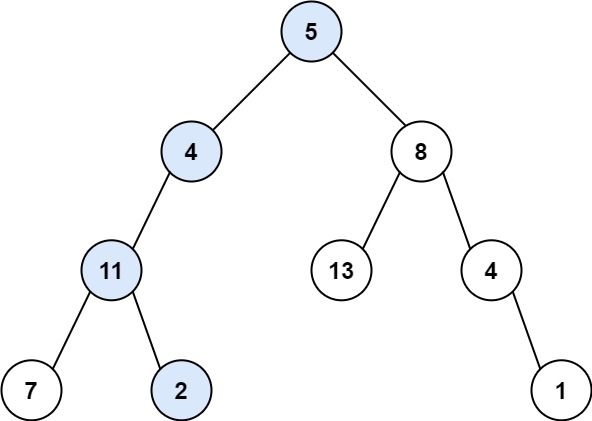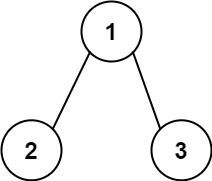Given the root of a binary tree and an integer targetSum, return true if the tree has a root-to-leaf path such that adding up all the values along the path equals targetSum.
A leaf is a node with no children.
Example 1:
Input: root = [5,4,8,11,null,13,4,7,2,null,null,null,1], targetSum = 22 Output: true
Example 2:
Input: root = [1,2,3], targetSum = 5 Output: false
Example 3:
Input: root = [1,2], targetSum = 0 Output: false
Constraints:
- The number of nodes in the tree is in the range
[0, 5000]. -1000 <= Node.val <= 1000-1000 <= targetSum <= 1000
# Definition for a binary tree node.
# class TreeNode:
# def __init__(self, x):
# self.val = x
# self.left = None
# self.right = None
class Solution:
def hasPathSum(self, root: TreeNode, sum: int) -> bool:
def dfs(root, sum):
if root is None:
return False
if root.val == sum and root.left is None and root.right is None:
return True
return dfs(root.left, sum - root.val) or dfs(root.right, sum - root.val)
return dfs(root, sum)/**
* Definition for a binary tree node.
* public class TreeNode {
* int val;
* TreeNode left;
* TreeNode right;
* TreeNode(int x) { val = x; }
* }
*/
class Solution {
public boolean hasPathSum(TreeNode root, int sum) {
return dfs(root, sum);
}
private boolean dfs(TreeNode root, int sum) {
if (root == null) return false;
if (root.val == sum && root.left == null && root.right == null) return true;
return dfs(root.left, sum - root.val) || dfs(root.right, sum - root.val);
}
}

